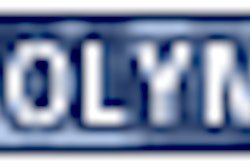CHICAGO - A new 1.5-tesla short-bore MRI scanner leads the list of new product highlights in the RSNA booth of Toshiba America Medical Systems. Other new RSNA technologies include an upgrade for the Tustin, CA, company's open MRI platform, advances in digital x-ray, and new options for Toshiba's ultrasound scanners.
The new MRI scanner will have a bore length of 1.5 meters, compared to the 1.85-meter bore on Toshiba's current high-field offering, Excelart. It will feature all of Excelart's applications, as well as some new sequences, according to Anita Bowler, product manager of the MRI business unit. The as-yet-unnamed unit will be installed at its first beta site in July 2003, with the official product launch at next year's RSNA show.
The Excelart platform has been segmented into four separate offerings, with each unit characterized by different gradient configurations and the inclusion of Toshiba's SPEEDER parallel imaging technique. Excelart AG features gradients with a 30 mtesla/m peak amplitude and 50 mtesla/m/msec slew rate, while Excelart AGS is the same configuration with SPEEDER. Excelart XG sports 30 mtesla/m gradients with a 130 mtesla/m/msec slew rate, while Excelart XGS is the SPEEDER version. SPEEDER received FDA clearance in October 2002 and is now shipping, Bowler said.
The Opart 0.35-tesla open scanner has evolved into the Ultra configuration, which features powerful new gradients that enable high-field applications on the scanner, according to Dane Peshe, director of Toshiba's MRI and nuclear medicine business unit. The gradients have peak amplitude of 25 mtesla/m and 100 mtesla/m/msec.
The more powerful gradients are possible on Ultra because of the scanner's four-post design, which helps reduce the impact of gradient vibration, Peshe said. The first Ultra has been installed at Desert Medical Imaging in Palm Desert, CA.
In CT, Toshiba is highlighting the Aquilion 16 multislice scanner. The system has begun shipping, and three are installed in the U.S., with another 35 expected to be in place by the end of March. Toshiba is emphasizing the ability to scan with three different slice widths -- 0.5 mm, 1 mm, 2 mm -- in 16-slice mode, according to Doug Ryan, director of Toshiba's CT business unit.
Recent enhancements to Aquilion include an expansion of the scannable range, to 180 cm, and a faster 400-ms gantry rotation speed. Toshiba also has received FDA clearance for a cardiac function analysis software package. The package enables users to view multiplane segmented reconstructions of the heart, with four segmentations, Ryan said. CT fluoroscopy is another new addition to the Aquilion 16 platform.
In the x-ray segment, Toshiba's Infinix-i vascular imaging system is now shipping after being introduced as a work-in-progress at the 2001 RSNA show. The system features a single-chip 12-bit charge-coupled device (CCD) camera and a brand-new imaging chain, according to Raymond Dimas, senior product manager for vascular systems. Infinix-i is capable of 3-D acquisitions at a rotation speed of 50º per second, with 60º/second rotation speeds possible for those customers who request it, Dimas said.
Toshiba is highlighting the multitasking capabilities of the system, with ability to use the same workstation for multiple tasks such as acquiring images from one patient while reviewing those from another. Users can also customize Infinix-i to conduct studies according to parameters that reflect their imaging preferences. The product received 510(k) clearance in November, and the first U.S. installations will begin in the first quarter of 2003.
Purchasers of Infinix-i will have a pathway to flat-panel digital detectors under the company's DynaDirect program, Dimas said. Toshiba is developing its own amorphous selenium-based detectors that can be retrofitted to products like Infinix-i.
Toshiba claims that the detectors will have image quality advantages over other dynamic flat-panel detectors already on the market, which are based on amorphous silicon. The DynaDirect panels will have a pixel size of 130 microns, compared to pixel sizes of 178 and greater on competing products, Dimas said. Also, amorphous selenium does not require the light-conversion step used on amorphous silicon panels, which the company believes confers additional advantages.
DynaDirect panels for cardiac applications will be shipping in May, with larger detectors for noncardiac use shipping in the beginning of 2004. A 14 x 14-inch panel for the Ultimax radiography/fluoroscopy system will available in July and can be installed as a field upgrade, Dimas said.
In ultrasound, Toshiba is emphasizing three new options for its Aplio platform. Advanced Dynamic Flow (ADF) provides visualization of microvessels within tumors and organs. In a two-step process, ADF's Doppler digital image optimizer detects low-velocity blood-flow, while the firm's adaptive image processing capability combines gray-scale tissue and blood-flow characteristics on a pixel-by-pixel basis, according to the vendor.
Another option, Dynamic Micro-Slice, provides thinner, higher-resolution images designed to improve clarity and precision. With Dynamic Micro-Slice, the elevation plane of the ultrasound beam is electronically focused, in contrast to a conventional fixed-beam elevation approach. Toshiba believes this approach yields additional anatomical detail particularly suited for breast imaging and high-resolution musculoskeletal scanning.
To improve contrast resolution, Toshiba's ApliPure real-time compound imaging technology employs spatial compounding to sequentially combine images acquired from different scanning directions in real-time, the vendor said. ApliPure also offers detail resolution improvements, utilizing frequency compounding to acquire multiple images at different frequency bands simultaneously.
The new Aplio options would each add approximately $10,000 to $17,500 to Aplio's list price of $225,000. In other ultrasound enhancements, the company has also added a laparoscopic probe to its Nemio series of ultrasound systems.
Toshiba is also displaying its simPACS digital image management line, offered in collaboration with technology partner Agfa HealthCare.
On the nuclear medicine side, the vendor is rolling out the Signature Series package for the e.soft workstation, used with Toshiba's T.Cam variable-angle gamma camera. Signature Series includes enhancements designed to improve productivity by using automated workflow to track nuclear medicine procedures from acquisition to output. For example, users can start a procedure protocol by clicking on a single button, according to Toshiba.
By Erik L. Ridley and Brian Casey
AuntMinnie.com staff writers
December 5, 2002
Copyright © 2002 AuntMinnie.com



















